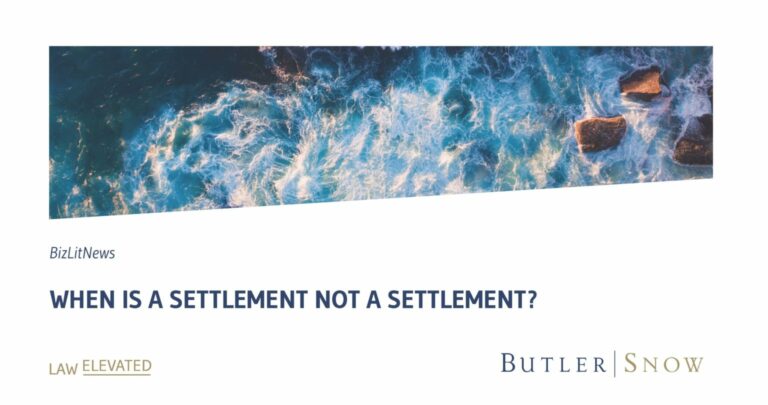It is well-settled in most jurisdictions that settlement agreements are contracts subject to the same rules of formation, validity, and interpretation as other contracts. C.J.S. Compromise & Settlement § 51 (2012)(“Settlements and releases are contractual agreements….”). Because of this, many jurisdictions require settlement agreements to be in writing to be enforceable. Sometimes, however, one party may think there is an agreed settlement, only to learn that the other party does not: perhaps the party renounced any agreement between the parties. Or the lawyer who agreed to the settlement did not have authority to bind the client. Maybe the written settlement agreement was not timely executed. What becomes of the purported settlement then? Principles of contract law may provide some answers.
Contract law provides that “[a]ny conduct inconsistent with an intention to rely on the compromise agreement constitutes an abandonment. This includes….where the plaintiff seeks to recover on the original claim.” 15A C.J.S. Compromise & Settlement § 51 (2021). Renouncing or abandoning a contract usually occurs when a party demonstrates an intention to refuse to perform within the time allowed by the contract. Moreover, once a party to a contract has renounced, abandoned, or rescinded it, the contract cannot be reinstated by an offer to perform.
Accordingly, under these principles, even if parties believe they have reached an agreement, one party’s revocation of settlement authority and refusal to sign a settlement agreement may constitute an abandonment, renunciation, and/or rescission of that agreement. 15A C.J.S. Compromise & Settlement § 51 (2021). Moreover, another change of heart and signing the agreement later does not revive it. In essence, a valid settlement agreement never existed between the parties.
It is axiomatic that a settlement agreement requires there to be a meeting of the minds with regard to the terms of the agreement. This meeting of the minds is best effectuated by reducing the agreement to writing. As I noted above, most jurisdictions require settlements to be reduced to writing, for this reason. As stated in American Jurisprudence, “[A] release that is not signed by either party is not validly executed and thus is not binding.” 66 Am. Jur. 2d. Release § 10 (2021). These rules of construction dictate that the best approach is to be clear during settlement negotiations that the settlement is not binding until the parties execute a written settlement agreement. Absent the signature of the party to be bound, it is likely that a settlement agreement may not be binding or enforceable. 66 Am. Jur. 2d. Release § 10 (2021).
Another problem can arise if the attorney who negotiates a settlement on behalf of a client does not have authority to do so. It is well-settled in many jurisdictions that an attorney cannot settle a client’s action without authorization from the client. An attorney’s authority to settle is not incidental, rather it is essential that an attorney have express, special authority from his client to do so. Without express settlement authority, no settlement can exist regardless of whether the parties had a meeting of the minds. And the safer course (and indeed, a requirement in some jurisdictions) is for such authority to be in writing from the client.
This blog touched on some of the issues that can blow up a settlement. The main takeaway? Best practice dictates putting everything in writing to avoid later challenges to the validity of a settlement, from the initial authority from the client to negotiate settlement to the agreement itself. Even then, challenges can arise, but a paper trail is the best method to preserve and uphold a settlement.

